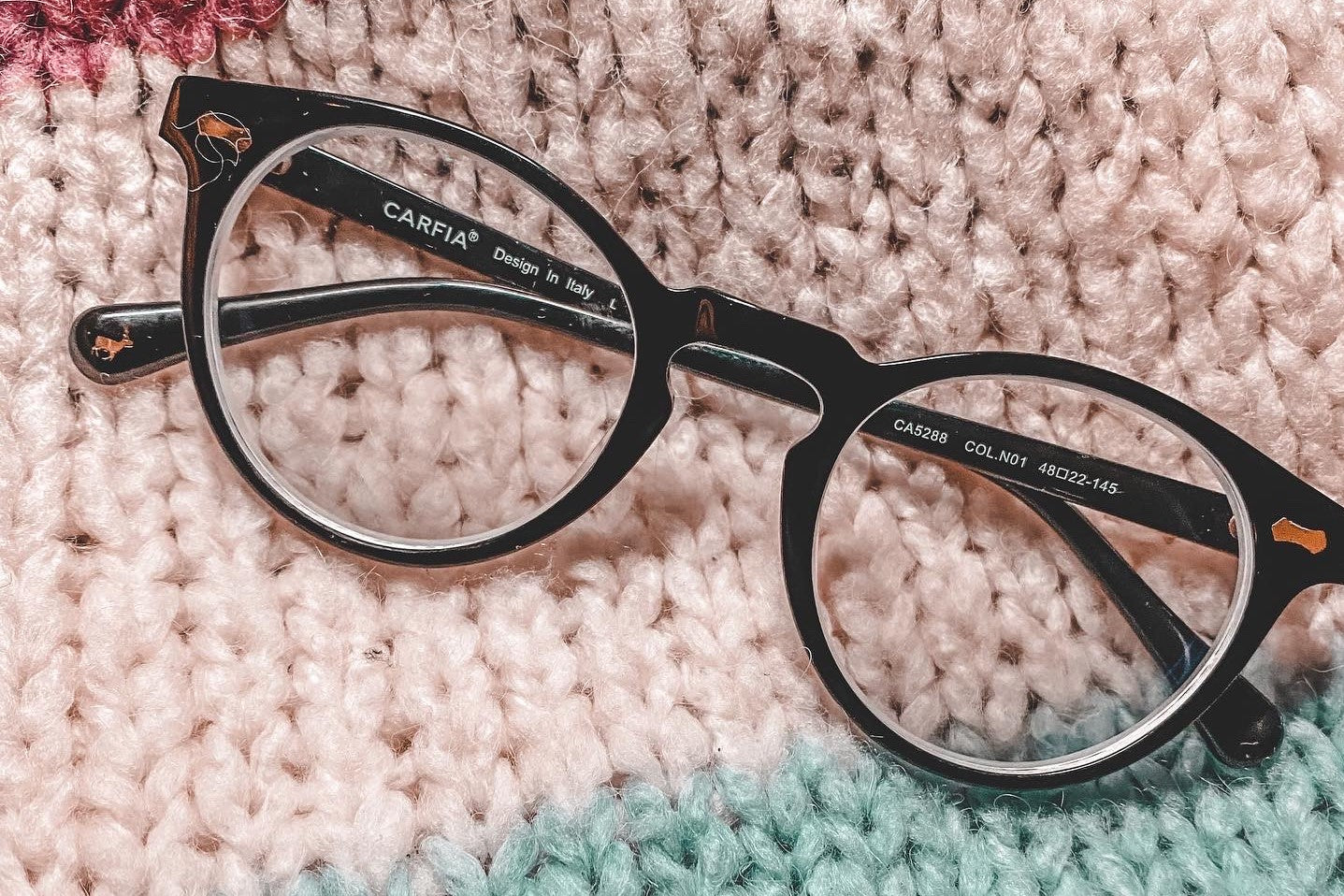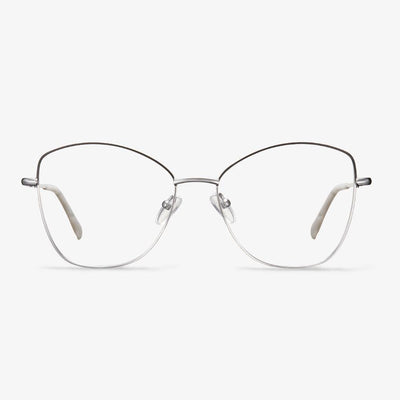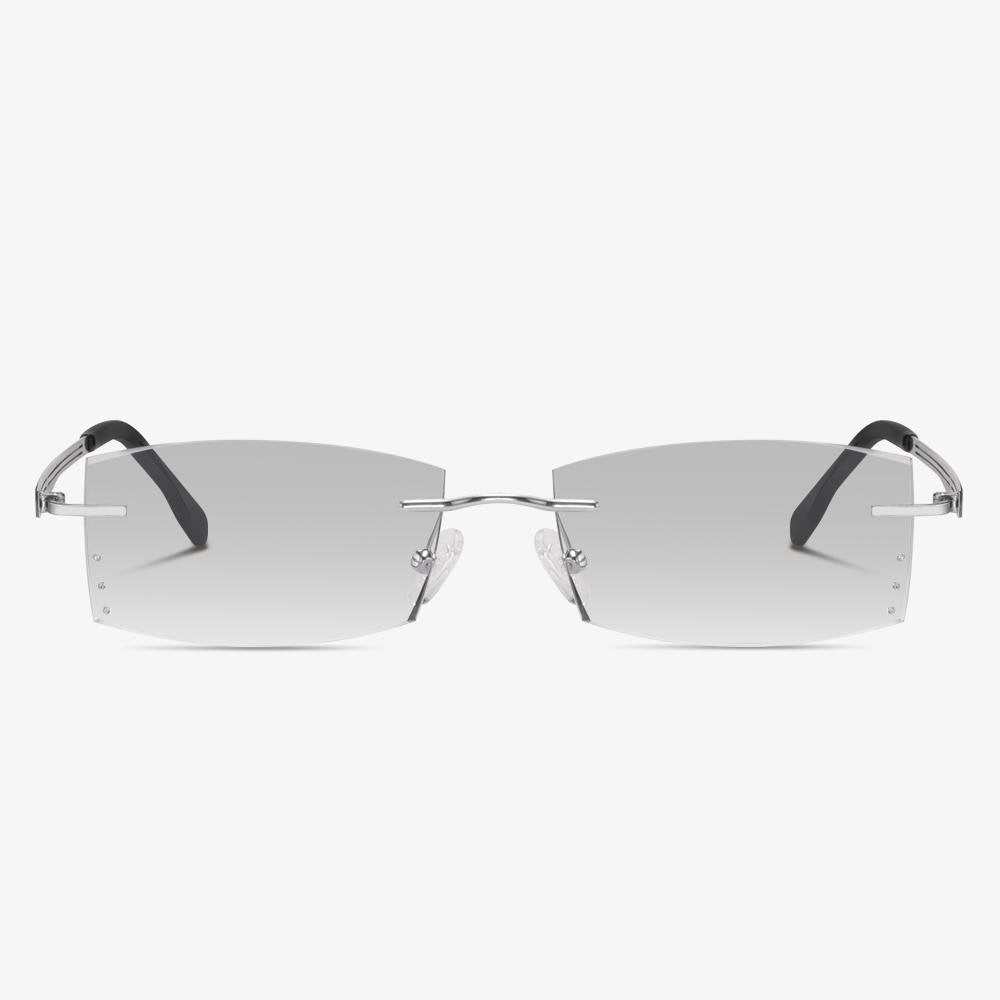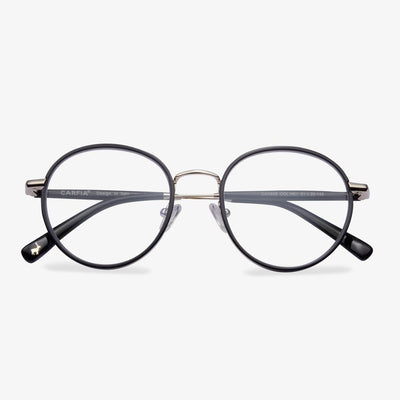What are blue light blocking glasses?
As we now spend more and more time on the screen, it is particularly important to pay attention to the effects of blue light. Approximately six out of ten adults will experience digital eye fatigue after using the device for more than 2 hours. Symptoms of digital eye fatigue include headaches, blurred vision, and dry eyes. The technology of blue light blocking glasses can effectively block part of the blue light damage to the eyes, reduce the visual fatigue caused by staring at the electronic screen for a long time and can also reduce the radiation and damage of ultraviolet rays to the eyes. However, the most important thing for eye protection is development. Good eye use habits, close your eyes regularly, and let your eyes rest.
Blue light blocking glasses are glasses that the manufacturer claims can filter out blue light. The lens of this kind of glasses has filter material or surface coating, which can block part of the blue light. People who believe that their eye and vision are damaged by blue light exposure may wear them to reduce blue light exposure.
Blue light is a short-wave blue light in the color spectrum visible to the human eye. Its wavelength is in the blue part of the electromagnetic spectrum, roughly 400–500 nanometers. Researchers believe that peak light damage occurs at approximately 440 nanometers. Computers, laptops, tablets, smartphones, and general lighting can all expose the eyes to blue light.
Warby Parker
WARBY PARKER, one of the most popular eyewear brands in the United States, set up its own experience store in New York City in 2014, where consumers can walk in and out and try them on. They founded a rebellious spirit and lofty goals: to create high-quality, classic production, and the pursuit of fashion and high-quality glasses. Warby Parker's overall design is minimal. They provide many services to help you choose the frame. Almost every frame has a try-on picture and full view and provides a virtual try-on service. Free trial at home, physical experience stores, online virtual tries, and unconditional returns within 30 days really make you feel free.
Color process of Contact lenses
Pigment printing process
It refers to the direct printing of pigments or patterns on the inside of the lens and then drying, which is the main production process of poor-quality chromatic contact lenses. Usually, small factories and small workshops use this method. The lens is being phased out because the pigment can easily seep out from the surface during wearing, causing discoloration and staining, and irritation to the eyes, which is a big risk.
Pigment build-in process
To be specific, the lens made by sandwich technology is a three-layer structure, the front and rear are colorless transparent layers, and the middle is a colored layer. After the processing of sandwich technology, the color layer is wrapped in the middle of the front and rear transparent layer, so that the pigment will not contact the eyes, which will not cause irritation and injury to the eyes. The downside of this process, however, is that the lenses are slightly thicker than normal contact lenses and are less oxygen-permeable, so they are not suitable for long-term wear.
The pressed film manufacturing process
This is a relatively new method of a similar sandwich process, and the color (pattern) is also made between the front and rear layers of the lens. But the color (pattern) is used to fill in the film process. During lens curing, the pigment seeps into the material instead of sticking to the surface. It feels as if the lens is covered in color within a single layer. This reduces the middle layer and makes the lens thinner, which naturally makes it more comfortable and permeable to oxygen.
Convenience and timeliness.
The essential carrier of Mobile applications is the mobile terminals. As the name suggests, these mobile terminals are not only smartphones and tablets but smart glasses, watches, clothing, accessories, and other kinds of personal belongings. They are part of what the human body wears and can be used anytime, anywhere. People can make full use of the fragmented time in life and work to accept and process all kinds of information on the Internet. They can no longer worry that they will miss any vital information, time-lapse information.
How to Clean Glasses
To clean glasses by yourself, you need to be careful and use the correct way to avoid some damage to the glasses such as scratches, etc. So, follow the below steps to clean glasses lens.
1. Before cleaning the eyeglasses, you need to wash and dry your hands first. You can use the soap to wash your hands dry them.
2. Rinse your glasses under a gentle stream of tap water. This way will remove dust and other debris and avoid causing scratches on your lenses. But one thing you need to pay attention to. Please do not use hot water since it can destroy some eyeglasses lens coatings.
3. Use a small drop of lotion-free dishwashing liquid to each lens. You can only use lotion-free brands.
4. Then gently rub both sides of the lenses and all parts of the frame. Make sure to clean every part of the eyeglasses.
5. Rinse both sides of the lenses and the frame. Make sure to remove all traces of the soap. Otherwise, it will cause the lenses to be smeared when you dry them.
6. Shake youreyeglasses to get rid of the water on your lenses gently and inspect the glasses carefully to make sure they are clean.
7. Then dry the lenses and frame with a clean and lint-free towel. Make sure the towel is clean, or the dirt or debris on the towel will smear and scratch your glasses.
After all steps are finished, you also need to check your glasses again and check whether they are clean.
As for how to clean glasses, you can follow the above steps. But when cleaning your glasses, you should be careful enough. When cleaning your glasses, something you can’t do. In the following section, we will list some of them.
Polarized vs non-polarized sunglasses
-
Non-polarized sunglasses generally only have the two basic functions of shielding strong light and filtering ultraviolet rays, and their efficiency in filtering ultraviolet rays is low. In our daily life, in addition to strong light and ultraviolet light, when light passes through uneven roads, water surfaces, and other places, irregular diffuse reflection light will be generated, which will cause blurred vision and fatigue in the eyes.
-
Polarized sunglasses can filter out this kind of light, only absorb the reflected light of the object itself, truly present what you see, make the field of vision clearer, and reduce visual fatigue. In addition, polarized sunglasses have a 99% blocking rate of ultraviolet rays due to their high-efficiency filter layer, which can effectively reduce the damage of ultraviolet rays to the eyes.
-
When judging whether the sunglasses are polarized lenses, you can rotate the sunglasses up to 45° clockwise. If the color of the lens changes at this time, and the color of the sunglasses returns to normal after turning the sunglasses back to the original position, then it can be judged that the sunglasses are polarized. And if you can’t see the change in the color of the sunglasses lens no matter how you turn it, then you can judge that the sunglasses are not polarized.
Size of the glasses frame
Children's glasses should have enough field of vision. Because children have different kinds of activities, try not to choose frames that will produce shadows and blind corners. If the frame is too small, the field of view will be smaller. If the frame is too big, it will be easy to wear instability, and weight will increase. So the frames for children should be moderate in size.











































